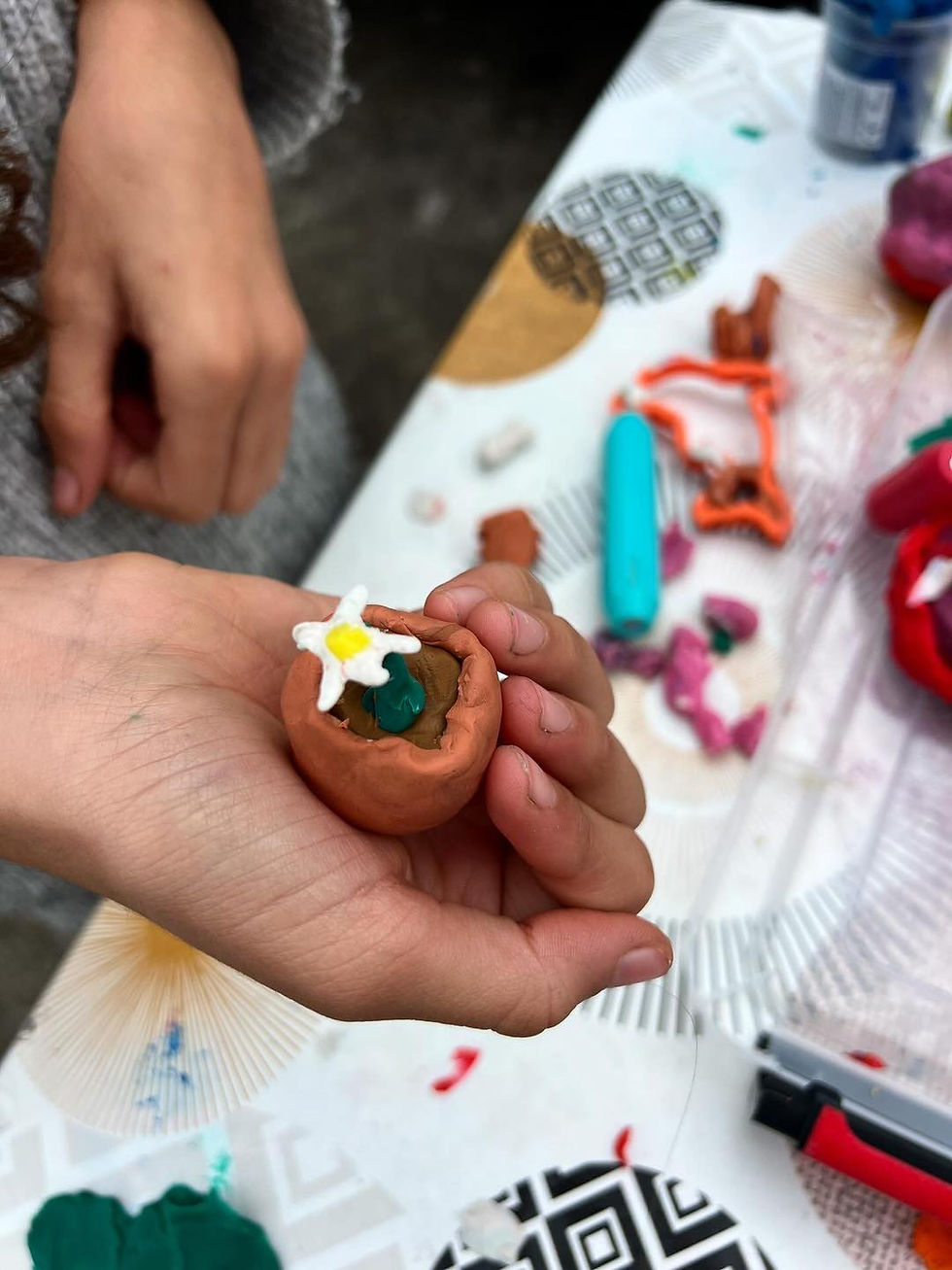Displacement – and the grounding of the tablecloth
- Art Refuge

- May 4, 2018
- 3 min read

On every occasion that we work in Calais we meet both hopelessness and hope in different measures. Through the psychosocial group spaces we offer we try to enable an in-between space that acknowledges the uncomfortable while supporting people to find, or hold onto, the resilience that they have. There are currently around 800 people in the Calais area with numbers rising, but due to the ongoing State hostility people are much more dispersed than previously and services are trying to adapt to meet their needs.
HOSTEL With a group of friends around the bedside we discussed the recent news about the British government’s hostile immigration policies and that things have been thrown more into the open. Anger and frustration were expressed about being stuck in Calais with no way forward and a sense of profound loss at what’s been left behind: “France is a prison and isn’t where I’m supposed to be.” We looked at postcards and drank the tea we were offered and praised its unusual spices. The conversation moved to a discussion of how each culture represented by those in the room welcomes guests differently into their homes – warmth and curiosity co-existing in the space alongside the sense of stuckness.
DAY CENTRE The day centre was quiet though in recent days numbers have been increasing. There was a focused atmosphere, most people intent on their phones or engaged in boardgames. Those who spoke to us described how they have found themselves in a place that they don’t belong – “I am neither welcome in Europe nor in Africa, I belong in neither place”, “I am losing my identity”. We heard of the tangles that people find themselves in and the things that get disrupted in the process – family ties, relationships, education, health. The large map allowed a space for this to be held with plasticine lines rising and falling, doubling back on themselves, ending abruptly in the sea, untethered. Surprising elements popped up, a hippo referenced here as it had been in at the hostel.
DISTRIBUTION With our large map taped on the Médecins du Monde ambulance we laid the tablecloth map on the ground. The latter literally provided some grounding for conversation, and connections between us and The School Bus Project which was setting up in the same area. The plasticine that we’d brought from the day centre was remoulded and reworked, and tender discussions were possible and new links made.
FRIDAY On Friday morning we visited the beautiful Anthony Caro Chapel of Light in the nearby town of Bourbourg. The first niche shows the creation of the world as a raging process with crashes, folds, faults and fractures moving from this chaos, to the final niche which depicts appeasement. We thought of the Christian household of the safe house – refugees and workers – and started to plan a group visit to this remarkable find of a place.
SAFE HOUSE In the safe house we laid a new green paper tablecloth onto the dining room table and 5 teenagers joined us to draw, build, play and chat amongst themselves in Tigrinya. The house was full, several of the young men have injuries, but the natural rhythm of the house was able to hold the fractures and difficulties. We left with the tablecloth still in place and gentle drawing continued as evening dinner preparations began.



Comments